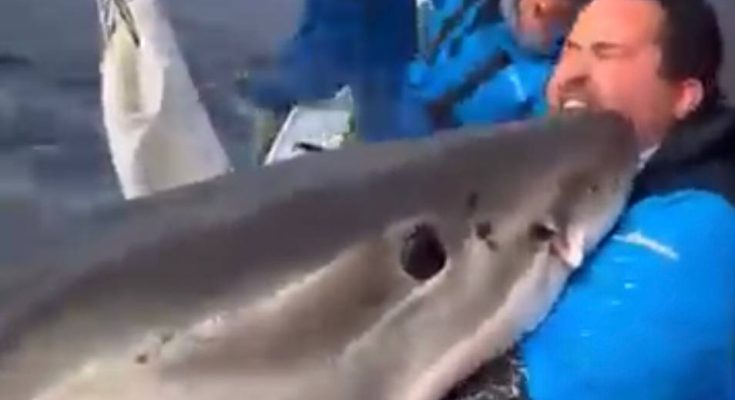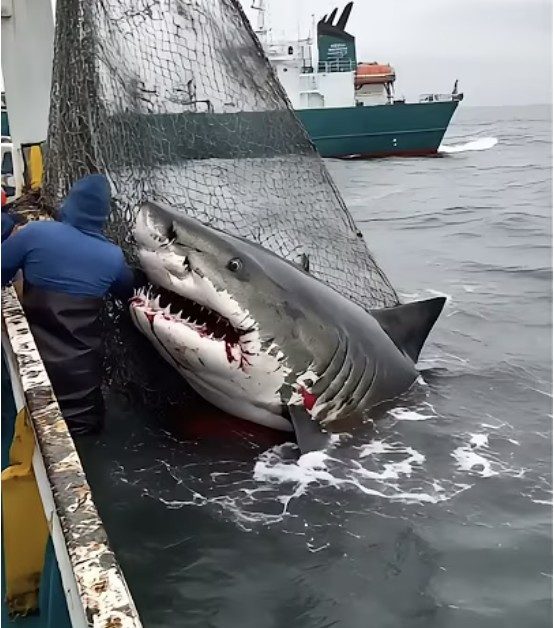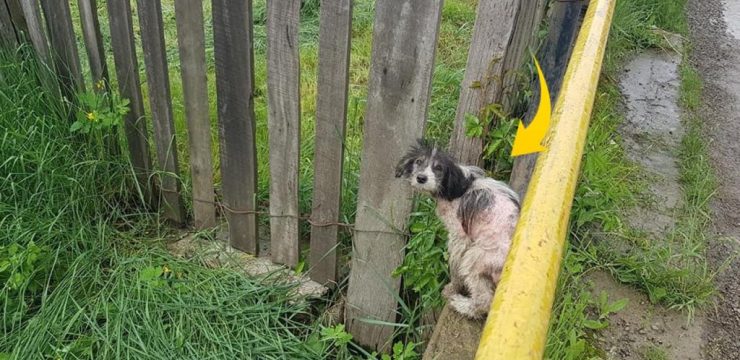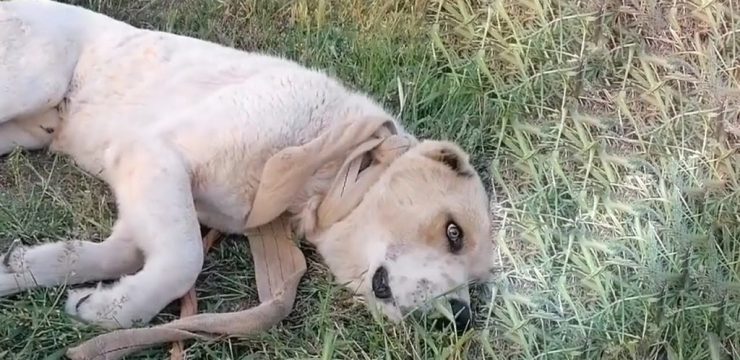The South African coastline is a place where beauty meets danger, where rolling waves hide both mystery and majesty. On one remarkable day, the vast ocean became the stage for an extraordinary encounter—one that would forever change the way those who witnessed it viewed nature itself. What began as an ordinary expedition soon unfolded into an unforgettable lesson in courage, compassion, and the delicate balance between humanity and the wild.

The morning had started peacefully. The sun shimmered on the water like liquid gold, seabirds glided in graceful arcs, and laughter drifted from a nearby fishing boat. The crew aboard a marine research vessel busied themselves with routine checks and measurements. Everything felt calm and ordinary—until a sudden shadow cut through the surface. The ocean, moments before serene, erupted into chaos.
A massive great white shark lunged from the depths, its fin slicing the waves as it thrashed near the boat. For a split second, panic surged through the crew. But what followed was not a tale of fear or violence—it became a story of bravery, empathy, and respect for life.
Just miles off the rugged South African shore, a team of marine biologists had been alerted to a distress call from local fishermen. A great white shark—one of the ocean’s most misunderstood and magnificent creatures—had become tangled in a cluster of abandoned fishing nets. The shark was fighting for its life, the coarse nylon cutting deep into its skin with every desperate movement.
Leading the rescue was Dr. Emily Carter, one of the region’s most respected shark behavior specialists. Calm, collected, and deeply compassionate, she had dedicated her life to studying these apex predators not as monsters, but as vital guardians of the ocean’s health. When the call came in, there was no hesitation. She knew every minute counted.
As the research vessel powered through the surf, tension filled the salty air. The hum of the engine mixed with the steady rhythm of crashing waves. “Remember,” Dr. Carter said firmly to her crew, “we’re here to save, not to scare.” Her words anchored them in purpose.
When the team reached the coordinates, all eyes turned to the horizon. Then they saw it—the iconic dorsal fin slicing through the water. But as they drew closer, their excitement gave way to sorrow. The shark was enormous, nearly fifteen feet long, but its strength was fading. The heavy nets had wrapped around its body and gills, cutting deep into the flesh. Every thrash only made the wound worse.
Without hesitation, Dr. Carter ordered a smaller dinghy to be lowered. The rescue team, armed with cutters and poles, approached carefully. The great white’s dark eye followed them—watchful, wary, but not hostile. It was as if the creature somehow understood they were there to help.
Working with precision and calm, the rescuers began to slice away the tangled nylon. Each strand that snapped free was a small victory, but also a moment of risk. One wrong move could startle the shark into panic. Every second felt like an eternity as they worked under the harsh sun, the boat rocking with each swell.
Then, without warning, the shark surged with a burst of strength. Water exploded around them as it twisted violently, threatening to capsize the small boat. Tools slipped from hands, the crew braced themselves, and adrenaline surged. But instead of striking, the shark went still again. The water calmed, and a strange quiet returned.
Dr. Carter moved closer, her eyes locked on the creature’s side. One final strand of net remained, deeply embedded. With a steady hand, she reached out and cut it loose. The tangled mesh floated away like a ghost disappearing into the sea.
For a moment, no one spoke. Then the shark began to move—slowly at first, testing its freedom. It circled the dinghy once, twice, gliding with powerful grace. The team held their breath as the great white passed near the boat’s edge, close enough for them to see the scars left by the net. And then, with a final flick of its massive tail, it slipped beneath the blue depths and was gone.
The silence that followed was broken by cheers. Laughter mixed with tears of relief. They had done it. Against all odds, they had given life back to a creature that symbolized the wild heart of the ocean. For Dr. Carter, it wasn’t just a professional triumph—it was a deeply personal moment. Looking out over the waves, she felt a profound sense of connection. Predator and protector had met not in conflict, but in understanding.
Word of the rescue spread quickly through conservation circles and social media. The video footage, captured from the vessel, became a viral symbol of hope. Thousands commented, expressing awe at the bravery of the team and the gentle intelligence of the shark. It reminded the world that empathy can exist even where fear once ruled.
Marine conservationists praised the event as a milestone, highlighting the urgent need to protect sharks from entanglement, pollution, and overfishing. The rescue reignited public discussion about the importance of preserving balance in marine ecosystems. For many who watched, it was a revelation—that the creatures we fear most may be the ones that need our compassion the most.
In the days that followed, Dr. Carter continued her research, but something in her perspective had changed. She often reflected on that moment when the great white had swum free, circling the boat as though acknowledging their efforts. “It wasn’t gratitude,” she later said in an interview, “but recognition. For a moment, we were equals in the same world.”

The story became more than a viral video—it became a reminder of what humanity can achieve when it acts not out of dominance, but respect. It was proof that bravery is not only about facing danger, but about extending kindness in the face of it.
That day off the South African coast showed that compassion can bridge even the widest divide—the one between predator and protector. The vast ocean, shimmering under the afternoon sun, reflected something timeless: that within both nature and ourselves lies the power to harm or to heal.
When the waves settled and the horizon returned to calm, those who were there knew they had witnessed something extraordinary. A life had been saved, yes—but so had a bit of faith in humanity. The sea, wild and unpredictable, had reminded them of a truth as deep as its waters: that empathy, not fear, is what truly connects us all.





